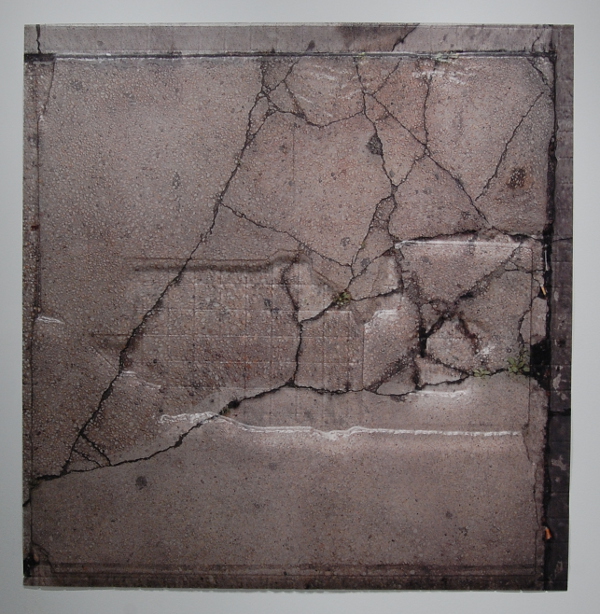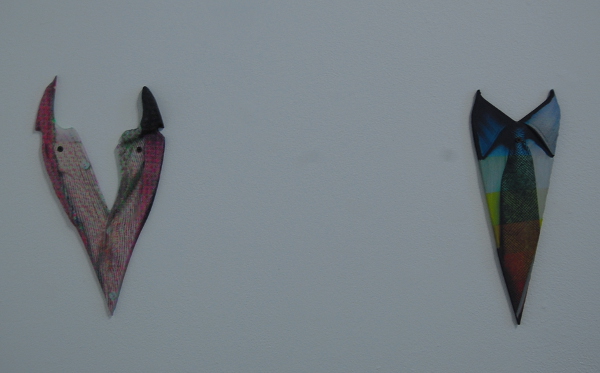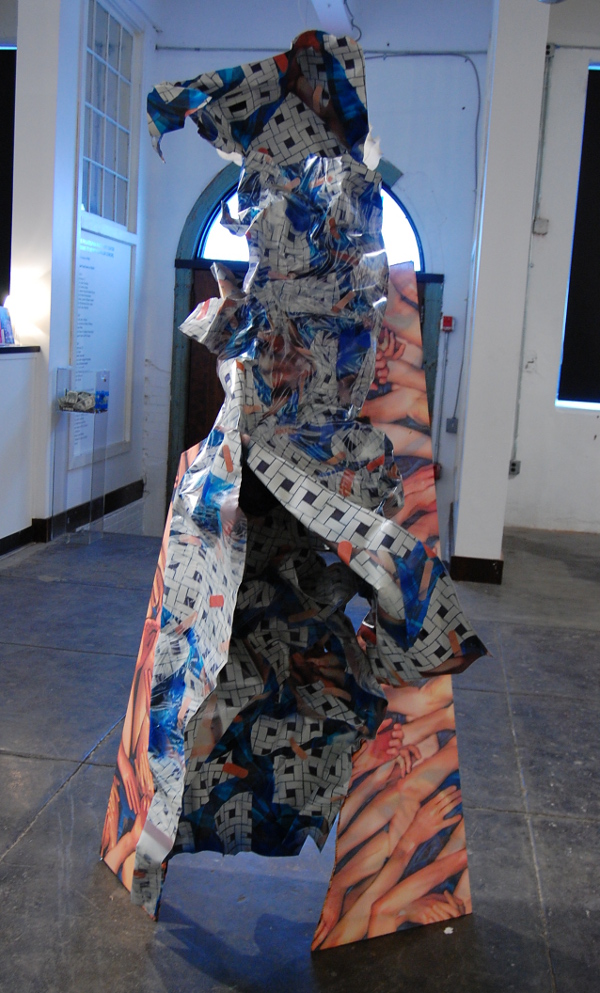
Photographs as objects at Philadelphia Photo Arts Center
Photographs are representations of our surroundings; ephemeral snapshots of people, places and moments in time – except when they’re not. The Philadelphia Photo Arts Center, a Knight Arts grantee, has featured Ethan Greenbaum, Sara Greenberger Rafferty and David Kennedy Cutler for their show “Beyond the Surface: Image as Object.” This exhibit seeks to see past the overt picture by combining the overwhelmingly flat medium of photography with other practices like collage and sculpture.
Ethan Greenbaum gives the neglected architectural and industrial corners of the world a new lease on life with his process of photography and physical texturing. Utilizing 3D printing technology to emboss his photographs of concrete and metal surfaces, these highly realistic, life-size reproductions almost appear as if they were cut from the ground and placed in the gallery. Further inspection, however, reveals that while these high-resolution copies are photographically precise, the surface they reside on is skewed and awry.
Ethan Greenbaum, “Facing Stone.”
In “Facing Stone,” we see the familiar image of crumbling sidewalk chunks ruptured by cracks. As the elements and fluctuating temperatures split the concrete, bits of eroded soil and resilient plants took hold in the crevices, further breaking down the surface. Greenbaum’s surface does not follow the guide of his photo though, and examination of the physical texture of the vacuum formed plastic exposes wrinkles, faults and even tiles despite their absence from the photo. Whatever source provided the topographic features superimposed over the colors of the photograph remains a mystery, but by separating the content from the material, we are able to see both independently – an opportunity we are not often afforded.
Sara Greenberger Rafferty, “Untitled.”
Sara Greenberger Rafferty examines gender roles and the prepackaged sheen of media and fashion with her rarely rectangular and sometimes sculptural prints. One wall contains a series of four collars minus both the shirts and people they were extracted from. Loose, unbuttoned necklines and neatly tied ties float above missing torsos and beneath headless voids. These faceless shirt-tops exude the power and privilege of masculinity in both their disheveled self-assurance and their stern professionalism without even an anonymous figure to express these notions. For all we know, the models from the original photos could very well have been women. Does the suit really make the man?
Sara Greenberger Rafferty, “Printed Frame with Ephemera.”
A plastic sheet containing a printed blue and white frame beckons us to look within it. In “Printed Frame with Ephemera,” Rafferty sets the bounds of her image but supplies very little else. The viewing area is almost completely transparent, a non-image of sorts that mostly showcases the white wall behind it. One small portion of the central area does contain the ‘ephemera’ of the title though: a tiny black and white portrait of a woman. Here the lines are blurry and the visual information is distorted in favor of the frame. By emphasizing the perimeter over the subject, Rafferty brings our attention to the marginalization of women and their accomplishments. The adornment is everything here as the frame emphasizes the decorative arts while the substance remains vacuous and minuscule.
David Kennedy Cutler, “Second Skin.”
David Kennedy Cutler’s artworks are hardly photos at all, and yet they are covered in them. Cutler constructs crumpled and confusing objects, some of which are even taller than a standing person. On the exteriors of the aluminum, fabric, and plastic structures, he prints repeating motifs of hands, feet, food products and bathroom tiles, to name a few. These could easily be twisted car frames from a junkyard if not for the photo montages spilling down their sides. Like discarded drafts in a garbage basket, these crinkled test prints are almost too much of everything – too contorted, too big, and covered in feverish repetition – but there is something reflective in the madness. Acting like a release valve for all of the built up pressure of image saturation, their very creation must be therapeutic.
When it becomes apparent that photographs can be more than portrayals, the creative process is blown wide open. Minds like these three artists are able to subvert surfaces, turn the tables on mass media, and offer catharsis in the face of a seemingly ceaseless parade of images. We might all do well to heed their messages.
Philadelphia Photo Arts Center is located at 1400 N. American St., Philadelphia; 215-232-5678; philaphotoarts.org.
Recent Content
-
Artsarticle ·
-
Artsarticle ·
-
Artsarticle ·



